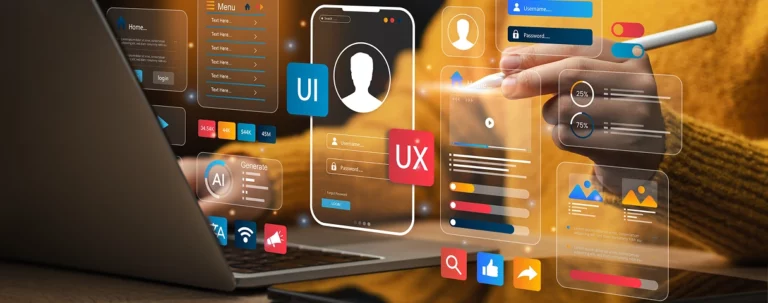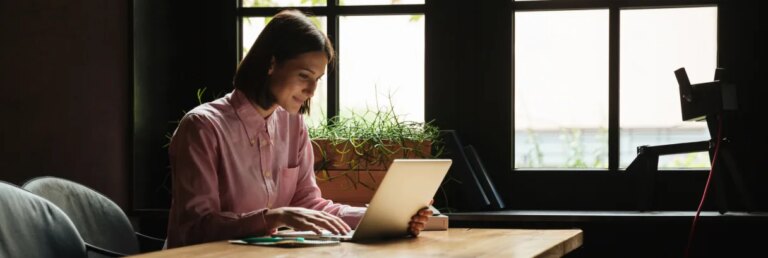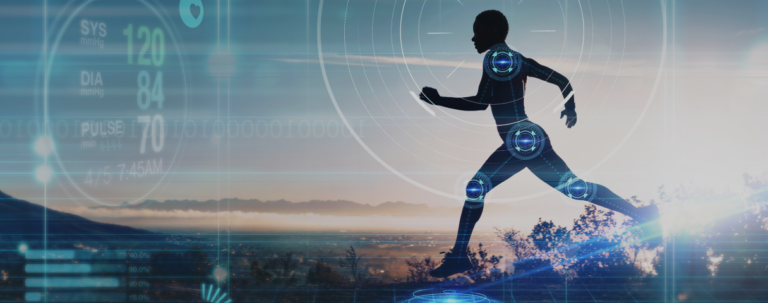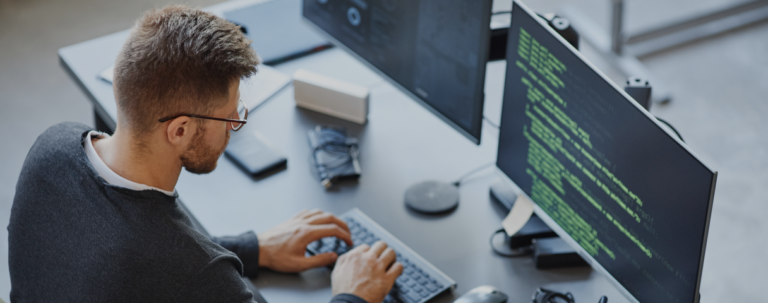
Design in the AI Era: How AI Tools Help Teams Work 10x Faster
Discover how AI accelerates creative workflows, scales design impact, and keeps humans at the center.

Fernando Martir
09/26/2025
When I first started working in design, our job was often misunderstood. Many assumed it was just about making screens look good — picking colors, arranging buttons, and polishing pixels. But design has always been much more than that. It’s a holistic process that involves research, strategy, execution, and validation — and now, in the age of AI, it’s evolving faster than ever before.
Artificial intelligence is not just another tool in our toolbox. It’s reshaping the very nature of design work — how we discover insights, generate ideas, and deliver products. And yet, one thing hasn’t changed: our responsibility to remain human-centered.
Sharpening the Axe: A Lesson for the AI Era
Let me start with a story that perfectly captures where we are as designers today.
Once there was a woodcutter known for being the fastest in the forest. But as years passed, his output declined. Other woodcutters — armed with sharper axes — soon surpassed him. When someone suggested he sharpen his blade, he replied, “I don’t have time — I’m too busy cutting trees.” Eventually, he was left behind.
The lesson is clear: our skills, tools, and processes must evolve. It’s not enough to rely solely on experience or instinct. AI is the new axe — and we need to learn how to sharpen and wield it to stay relevant.
The Design Process — and Its Challenges
Before we talk about AI’s role, let’s look at our process. At its core, design follows three major stages:
- Discovery and Research – Understanding the problem through interviews, competitive analysis, and user studies.
- Design and Ideation – Turning insights into wireframes, prototypes, and interfaces.
- Handoff and Validation – Translating design to development and ensuring the final product matches the vision.
While this process works, it’s not without its pain points. Designers frequently face:
- Time-Intensive Research – Conducting and analyzing interviews can take weeks.
- Scaling Consistency – Large projects require meticulous alignment to avoid breaking patterns.
- The Blank Page Problem – Staring at an empty canvas and not knowing where to start.
- Design-to-Development Gaps – Miscommunication often slows implementation.
What these challenges have in common is that they’re manual, repetitive, and time-consuming — precisely the kinds of tasks where AI excels.
Where AI Fits In: Tools That Amplify Creativity
AI is already changing how we approach each stage of design. Here’s how:
- Research: Making Sense of Data Faster: AI tools like Dovetail and Maze can analyze user feedback, detect patterns, and generate insights at lightning speed. Instead of spending hours sifting through notes, we can focus on interpreting results and identifying opportunities.
- Ideation: Brainstorming with a Copilot: Tools like ChatGPT or Gemini are excellent creative partners. They can help you generate ideas, draft copy, or even suggest user flows. The magic happens when you provide the right prompts — a skill known as prompt engineering — and let the AI spark new directions you might not have considered.
- Execution: Accelerating Delivery: Figma’s latest AI features are redefining the execution phase. You can now describe a design in words, and Figma will generate a layout or component structure in seconds. This turns the blank page problem into an opportunity to iterate faster and focus on refinement rather than creation.
(And this is just the beginning — Figma’s AI features are still evolving, but their potential is transformative.)
The Future Designer’s Skillset
If AI is handling many of our repetitive tasks, where does that leave us? The answer is simple: it elevates our role. Designers must now develop two sets of skills to thrive:
Human-Centered Skills
- Empathy – Understanding real human needs and contexts.
- Strategic Thinking – Connecting design decisions to business goals.
- Ethical Judgment – Ensuring AI-driven designs remain inclusive and responsible.
Technical Skills
- Prompt Engineering – Asking the right questions to get valuable AI output.
- AI Literacy – Understanding how AI works and what its limitations are.
- Data Literacy – Critically analyzing AI-generated insights and validating them against real-world data.
The more we master these skills, the more we can guide AI rather than be guided by it.
Rethinking Our Value as Designers
One fear I often hear is that AI will replace designers. The truth is, AI will replace tasks, not talent. If our value lies solely in moving pixels, then yes, we’re at risk. But if we focus on strategy, empathy, and creativity, we become irreplaceable.
Our job is no longer just to “design faster” — it’s to ask better questions, make better decisions, and lead AI toward solutions that serve real people. In the future, competitive advantage won’t come from who designs the fastest, but from who asks the most insightful prompts.
Imagining What’s Next
The future of AI in design is thrilling. Imagine tools that:
- Run automatic accessibility audits before a design is handed off.
- Suggest new behavior patterns based on live user data.
- Continuously optimize interfaces without manual intervention.
These possibilities aren’t science fiction — they’re already on the horizon.
Adapt or Become Obsolete
AI is here to stay. It’s not a threat — it’s an amplifier. It frees us from the mundane so we can focus on the meaningful. But to thrive, we must evolve. That means sharpening our tools, building new skills, and embracing the shift toward strategy and empathy.
If there’s one message I want you to take away, it’s this: don’t fear AI — collaborate with it. Learn how to guide it, how to challenge it, and how to use it to elevate your craft. Because in this new era, the designers who succeed won’t be the ones who resist change — they’ll be the ones who embrace it.
If there’s one message I want you to take away, it’s this: don’t fear AI — collaborate with it

Fernando Martir
Design ManagerRelated Articles
Looking For a Partner to Meet Your Business Goals?
See what Applaudo can do for you!
Explore Our Services



